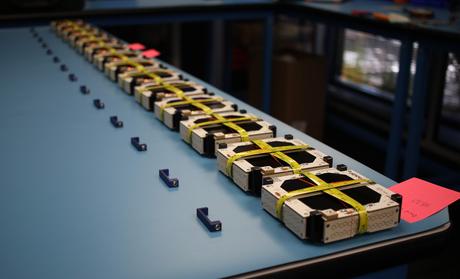
Swarm's new satellite network aims to provide low-bandwidth, low-power connectivity to Internet of Things devices around the world, and the company has just announced how much its technology will actually cost. A $ 119 card will be sold to supplement with new products, so even if your home security camera won't receive it, it could be invaluable for a beehive monitor deep in an orchard or a gunshot detection platform in a protected nature reserve. .
The Swarm card is roughly the size of a packet of chewing gum and provides a constant connection at the type of data rate and power requirements IoT devices need, i.e. low. After all, things like barometric pressure monitors, seismic activity detectors, and vehicles operating away from cellular coverage only send and receive a handful of bytes from time to time.
Connecting them to legacy geosynchronous satellite networks is possible, of course, but also expensive, cumbersome and energy-hungry. Swarm aims to offer a similar service for one-tenth the price; The company's basic data plan provides up to 750 packets per month, with each packet up to 200 bytes. Not much, but it's more than enough for many applications.
It is important to keep costs down and increase connectivity in growing sectors such as precision agriculture and smart maritime and logistics work. Being able to check in hourly from anywhere in the world for five dollars a month is a no-brainer for many businesses that may otherwise have to go blind or pay a little more for a traditional satellite link.
It is not only the Swarm chip that is small, but also the satellites themselves. So much so that they attracted unwanted attention from the FCC, which feared that the company's "SpaceBEEs" were too small to be tracked effectively from the ground. Luckily Swarm cleared everything up last year and sent out his first dozen earlier this month.
Right now the company has 12 of the 150 planned satellite constellations in orbit, so it's still demonstrating its network with early access and pilot projects. This affects covered areas and traffic limits, but the company expects the full set to be in orbit by mid-2021.
Source link